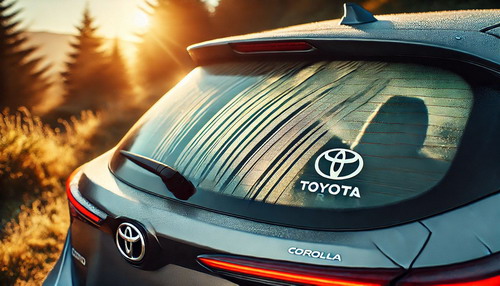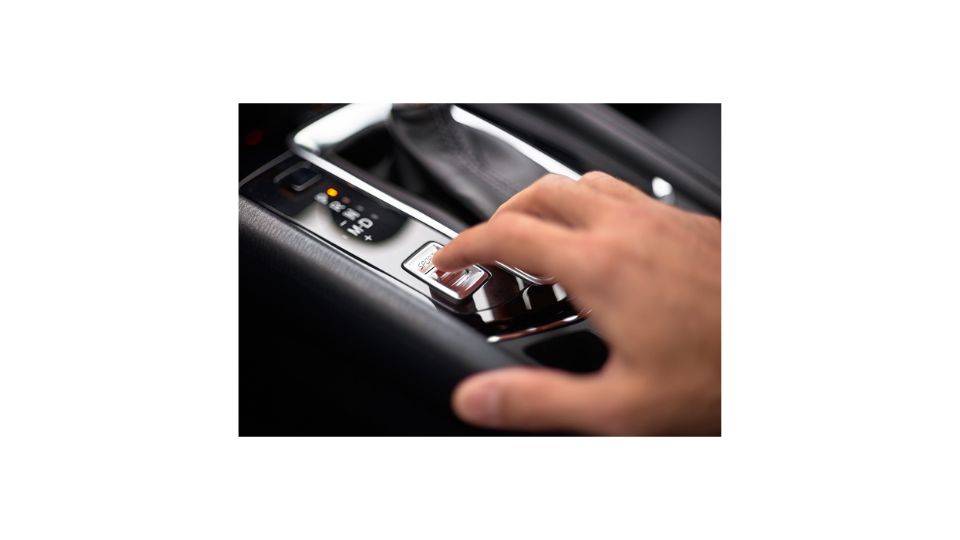Toyota Corollas are known for their reliability, yet some owners encounter issues with the rear window defroster. Identifying these problems early can prevent further complications and ensure optimal visibility in adverse weather conditions. Addressing defroster concerns not only enhances safety but also improves overall driving comfort.
Common issues include electrical failures and fuse malfunctions that can hinder the defroster’s efficacy. By diagnosing these problems and understanding the factors at play, drivers can make informed decisions about repairs or maintenance.
Regular checks and awareness of potential signs of malfunction can significantly enhance the longevity of the defroster system. By remaining proactive, he or she can enjoy a clearer view and greater peace of mind during inclement weather.
Key Takeaways
- Early identification of defroster issues is crucial for safety.
- Regular maintenance can prevent electrical and fuse problems.
- Seeking professional help ensures effective repairs when needed.
Understanding the Rear Defroster System
The rear defroster in a Toyota Corolla is designed to clear ice and fog from the rear window. It typically operates using thin wires that are embedded in the glass. When activated, these wires generate heat to effectively remove condensation.
Common Issues
Problems with the Corolla’s rear window defroster may arise. Here are some typical issues:
- Defroster Not Working: The defroster may fail to heat the glass.
- Uneven Heating: Some areas may remain foggy while others clear.
- Electrical Issues: Faulty wiring can lead to a complete failure.
Causes of Malfunctions
Several factors can contribute to rear defroster problems:
- Broken Wires: Hairline fractures can disrupt heating elements.
- Fuses: A blown fuse can cut off power to the defroster.
- Switch Failure: The switch or relay may malfunction.
Troubleshooting Steps
To address these issues, consider the following steps:
- Check the Fuse: Inspect the fuse box for any blown fuses.
- Inspect Wiring: Look for visible damage to the defroster wires.
- Test the Switch: Ensure the defroster switch functions properly.
For persistent issues, it may be necessary to consult a professional mechanic. They can diagnose and repair any underlying problems effectively.
Troubleshooting Common Defroster Problems
When the rear window defroster in a Toyota Corolla fails to heat, it may be due to several reasons.
Check the Switch
Ensure that the defroster switch is functioning properly. A malfunctioning switch can prevent the defroster from activating.
Inspect the Fuse
The defroster system is supported by a fuse. If the fuse is blown, it will halt operation. Replacing a blown fuse can often resolve the issue.
Examine the Wiring
Damaged wires are a common culprit. Inspect the rear window defroster wires for any signs of wear or breakage. Look for disconnected or frayed wires.
Test the Grid Lines
The grid lines on the rear window are essential for heating. Use a multimeter to check for continuity. If there are broken lines, the grid may need repair.
Inspect the Rear Window
Check for any obstructions or residue on the rear window. Foreign materials can prevent proper operation. Clean the area if necessary.
Seek Professional Assistance
If troubleshooting does not resolve the problem, it may be worthwhile to consult a technician. They can provide insights into more complex electrical issues.
Staying proactive with these checks can help maintain the efficiency of the Toyota Corolla’s rear window defroster system. Regular maintenance can prevent most common problems.
Fuse and Relay Issues
Fuse and relay problems are common causes of rear window defroster malfunctions in the Toyota Corolla. Identifying these issues can help in restoring the defroster’s functionality efficiently.
Identifying Fuse Problems
The rear defroster in the Toyota Corolla relies on a dedicated fuse. This fuse is typically located in the fuse box, which can be found under the dashboard or in the engine compartment.
Common signs of a blown fuse include:
- Non-operation of the defroster: If the defroster does not activate, check the fuse first.
- Visual inspection: A damaged or burned fuse will often have a broken filament.
To check the fuse, remove it and inspect it visually. It’s recommended to use a multimeter to confirm continuity in the fuse. If the fuse is faulty, replace it with one that matches the specifications indicated in the owner’s manual, usually a standard 10-amp fuse for the defroster circuit.
Relay Malfunctions
In addition to fuses, issues with the defroster relay can also cause operational failures. The relay acts as a switch to control electrical power to the rear window defroster.
Signs of relay malfunctions include:
- Intermittent functioning: If the defroster works sporadically, the relay might be failing.
- No click sound: A lack of clicking when the defroster is activated indicates a faulty relay.
It’s advisable for owners to locate the defroster relay, often situated in the engine compartment fuse box. Similar to fuse testing, the relay can be checked by swapping it with a known good relay or testing it with a multimeter. Replacement relays should match the OEM specifications to ensure proper function.
Defroster Switch and Button Concerns
The functionality of the rear window defroster in a Toyota Corolla often hinges on the switch and button mechanisms. Issues with these components can disrupt the defroster’s performance, leading to inconvenience during cold weather conditions.
Switch Operation and Diagnosis
Problems with the rear defroster switch can manifest in various ways. If the switch does not engage properly, it may prevent the defroster from operating. Common issues include:
- Electrical Faults: Wiring issues can disrupt power flow to the switch.
- Mechanical Failure: Physical damage to the switch can impair functionality.
To diagnose these problems, it’s advisable to perform a visual inspection of the switch for any signs of wear or damage. Using a multimeter can also help assess the electrical connections. If the switch shows continuity issues, replacement may be necessary to restore proper operation.
Button Responsiveness Checking
A non-responsive rear defroster button can greatly affect usability. If pressing the button yields no results, several factors should be considered:
- Button Wear: Over time, the button may deteriorate and fail to make proper contact.
- Connection Issues: Loose or corroded connections can impede button functionality.
To check the button’s responsiveness, users can conduct a simple test by pressing the button while observing the defroster indicator light. If the light does not illuminate, it suggests a potential fault. Cleaning the button area and ensuring all connections are tight can sometimes resolve minor issues. If the problem persists, consider professional assistance for further diagnosis.
Repairing the Defroster
When facing issues with the Toyota Corolla rear window defroster, a systematic approach is essential. Problems often arise due to a faulty switch, broken connection, or damaged heating elements.
Troubleshooting Steps
- Check the Fuse: Inspect the fuse related to the defroster system. A blown fuse may prevent it from functioning.
- Examine the Switch: Test the defroster switch for continuity. A malfunctioning switch requires replacement.
- Inspect Connections: Look for any loose or corroded connections along the wiring harness to the rear window.
Repair Options
If troubleshooting does not resolve the issue, consider the following repair options:
- Heating Element Repair: If the heating elements are damaged, they can sometimes be repaired with conductive repair kits.
- Replacement of the Entire Unit: In cases where the defroster is beyond repair, replacing the entire rear defroster assembly may be necessary.
Replacement Process
For a successful replacement:
- Gather Necessary Tools: Required tools may include screwdrivers, a soldering iron, and a test light.
- Remove the Rear Panel: Carefully detach the rear panel without damaging clips or surrounding components.
- Install the New Assembly: Follow the reverse order for installation, ensuring all connections are tight and secure.
This methodical approach can restore proper function to the rear window defroster.
Addressing Defroster Grid Issues
Defroster grid problems in the Toyota Corolla can manifest as uneven heating or complete failure to defrost the rear window. Identifying the issue is crucial for effective repairs.
Common Symptoms:
- Incomplete Defrosting: Areas of the grid remain foggy or frosted.
- Visible Damage: Cracks or breaks in the grid lines.
- Electrical Malfunctions: Issues with the switch or wiring.
Steps for Diagnosis:
- Visual Inspection: Check for any visible damage to the grid. Look for black lines that appear broken or disconnected.
- Electrical Testing: Use a multimeter to test the grid’s continuity. An open circuit indicates a problem.
- Examine Connections: Inspect wiring and connectors for corrosion or loose connections.
Repair Options:
- Defroster Repair Kits: Available for minor repairs, these kits often include conductive paint to fix small breaks in the grid.
- Professional Service: For extensive damage, it may be advisable to seek professional help. Technicians can replace the entire rear window if necessary.
Preventive Measures:
- Careful Cleaning: Use non-abrasive cleaners to avoid damaging the grid.
- Routine Inspections: Regularly check the defroster for optimal functioning, especially before winter.
By addressing these grid issues promptly, the Toyota Corolla can maintain effective defrosting performance.
Visibility and Fogging
Fogging on the rear window of a Toyota Corolla can significantly impair visibility. This issue commonly occurs under specific conditions, especially during cold or humid weather.
When moisture accumulates inside the vehicle, it creates a warm, humid environment. This leads to condensation forming on the rear window, obstructing visibility.
Common Causes of Fogging:
- Humidity: High moisture levels in the air contribute to fogging.
- Temperature Differences: Warm air inside the vehicle meets the cooler glass, causing condensation.
- Leaks: Water ingress from weather stripping or window seals can increase humidity.
To reduce rear window fogging, consider the following strategies:
- Use the Defroster: Activate the rear defroster before starting a drive.
- Increase Air Circulation: Utilize the vehicle’s AC system to circulate dry air.
- Keep Windows Clean: Clean glass surfaces to reduce residue that can trap moisture.
Drivers should also be aware of the limitations of the rear window defroster. If the defroster is malfunctioning, additional measures may be necessary to maintain clear visibility. Regular maintenance can help prevent issues that lead to fogging.
Electrical Connection Concerns
Electrical connection issues in the Toyota Corolla’s rear window defroster can lead to ineffective operation. Properly inspecting the wiring and troubleshooting the electrical flow are essential steps in resolving these problems.
Inspecting Wiring Connections
Begin by visually inspecting the wiring connections at the rear window defroster. Look for signs of wear, corrosion, or damage that could disrupt the electrical flow. The connectors should be securely attached and free of any debris.
Using a multimeter, measure the continuity of the wiring. This will help identify any breaks or short circuits within the system. If any corrosion is present, it may be necessary to clean the connectors to ensure a stable connection. Repair or replace any damaged wires to restore functionality.
Troubleshooting Electrical Flow
To troubleshoot electrical flow, check the voltage reaching the defroster. Using a multimeter, confirm that the system receives the proper voltage when activated. If the voltage is inadequately low, trace the power source back to the fuse box.
Inspect the fuses related to the defroster circuit, ensuring they are functional. If a blown fuse is found, replace it and recheck the defroster’s operation. Additionally, examine the defroster switch for any internal faults that could impede electrical flow. Consistent issues may indicate the need for professional inspection.
Preventive Maintenance for Rear Defrosters
Regular maintenance can help ensure the rear window defroster operates effectively. Owners should follow these guidelines:
- Inspect for Damage
Check the rear window and defroster grid for any visible damage, such as cracks or discoloration. This can impede the defroster’s performance. - Clean the Surface
Keep the rear window clean. Dirt and grime can obstruct the defroster’s effectiveness. Use a soft cloth and appropriate cleaner to avoid scratching the surface. - Check Electrical Connections
Examine the wiring and connections related to the defroster. Loose or corroded connections can lead to malfunctions. Tighten any loose connections. - Test Functionality
Periodically test the defroster by turning it on to ensure it heats up evenly. Any inconsistency might indicate an underlying issue. - Avoid Blocked Vents
Ensure that the vehicle’s ventilation system is working properly. Blocked vents can lead to moisture buildup, which the defroster must work harder to eliminate. - Monitor Battery Health
The defroster relies on the vehicle’s electrical system. Regularly check the battery and charging system to ensure sufficient power for operation.
Implementing these maintenance practices can enhance the longevity and reliability of the rear window defroster system.
When to Seek Professional Assistance
Identifying issues with the rear window defroster of a Toyota Corolla can sometimes be straightforward. For minor problems, such as a blown fuse or a loose connection, a DIY approach may suffice.
However, certain signs indicate the need for professional assistance:
- Persistent Issues: If the defroster fails to work after trying basic fixes.
- Uneven Heating: If specific sections of the window remain foggy or icy while others clear up.
- Visible Damage: Cracks or breaks in the defroster grid wires.
- Electrical Problems: Fuses blowing frequently or issues with other electrical components.
A technician can ensure thorough diagnostics and repair. Professionals have the tools and expertise to address more complex electrical problems that may not be easily visible.
In some cases, the problem may stem from deeper electrical issues in the vehicle. To avoid further complications, seeking expert help is wise.
When visiting a shop, be prepared to provide details about the symptoms. This information can significantly assist the technician in diagnosing the problem quickly.
Proactive steps can prevent minor issues from escalating into more significant concerns, saving time and money in the long run. Maintaining clear communication with professionals ensures that the correct solutions are implemented effectively.
FAQs: Toyota Corolla Rear Window Defroster Problems
Q1: What are common issues with the rear window defroster in a Toyota Corolla?
Common issues include the rear defroster not working, problems with the defroster fuse, relay, or switch, and damage to the defroster wires or grid.
Q2: Why is my Toyota Corolla’s rear defroster not working?
The rear defroster might not work due to a blown fuse, a faulty defroster relay, a malfunctioning switch, or damaged defroster wires or grid.
Q3: How do I troubleshoot my Toyota Corolla’s rear defroster?
Start by checking the fuse for the rear defroster. If the fuse is intact, inspect the relay and switch. If these components are functional, the issue might be with the defroster wires or grid.
Q4: What should I do if the rear defroster fuse in my Toyota Corolla is blown?
Replace the blown fuse with a fuse of the same rating. If the new fuse blows again, there may be an underlying electrical issue that needs professional attention.
Q5: How can I fix the rear defroster relay in my Toyota Corolla?
If the relay is faulty, it will need to be replaced. Consult the vehicle’s manual or a professional mechanic for detailed instructions on replacing the relay.
Q6: What causes the rear defroster switch in my Toyota Corolla to malfunction?
The rear defroster switch can malfunction due to wear and tear, electrical issues, or damage. Replacing the switch usually resolves the problem.
Q7: How do I repair the rear window defroster in my Toyota Corolla?
Repairing the rear window defroster can involve replacing a blown fuse, faulty relay, or malfunctioning switch, and repairing any damaged defroster wires or grid. It’s advisable to consult a professional mechanic for these repairs.
Q8: What are the signs of damaged defroster wires in a Toyota Corolla?
Signs of damaged defroster wires include the defroster not working at all or only partially clearing the rear window. Inspect the wires for visible damage and repair or replace them as necessary.
Q9: How do I fix problems with the defroster grid in my Toyota Corolla?
If the defroster grid is damaged, it can often be repaired using a defroster grid repair kit, which contains conductive paint to restore the broken grid lines.
Q10: Why does my Toyota Corolla’s rear window fog up despite using the defroster?
If the rear window still fogs up, the defroster may not be working effectively due to issues with the fuse, relay, switch, or damaged grid lines. Ensure all components are functioning correctly and repair any faults.
Q11: How can I address connection issues with my Toyota Corolla’s rear defroster?
Inspect the electrical connections for the rear defroster, ensuring they are secure and free of corrosion. Repair or replace any faulty connections.
Q12: Why is my Toyota Corolla’s rear defroster button not responding?
A non-responsive defroster button can be caused by a faulty switch, a blown fuse, or an issue with the relay. Check these components and replace any that are faulty.
Q13: What should I do if my Toyota Corolla’s rear defroster is not heating up?
If the defroster is not heating up, check the fuse, relay, switch, and defroster grid for any faults. Replace or repair any defective components to restore functionality.
Q14: What are common electrical problems with the rear defroster in a Toyota Corolla?
Common electrical problems include blown fuses, faulty relays, malfunctioning switches, and damaged wiring. Inspect these components and repair or replace any that are faulty.
Q15: How do I replace the rear defroster in my Toyota Corolla?
Replacing the rear defroster typically involves repairing or replacing the defroster grid, wires, fuse, relay, or switch. Consult the vehicle’s manual or a professional mechanic for detailed instructions.

When he’s not working his magic under the hood, Ethan Wilson is usually sharing his love for Toyota cars through his writing. Ethan’s got a special talent for breaking down complex car topics into easy-to-understand articles, making him a go-to source for Toyota enthusiasts everywhere.




